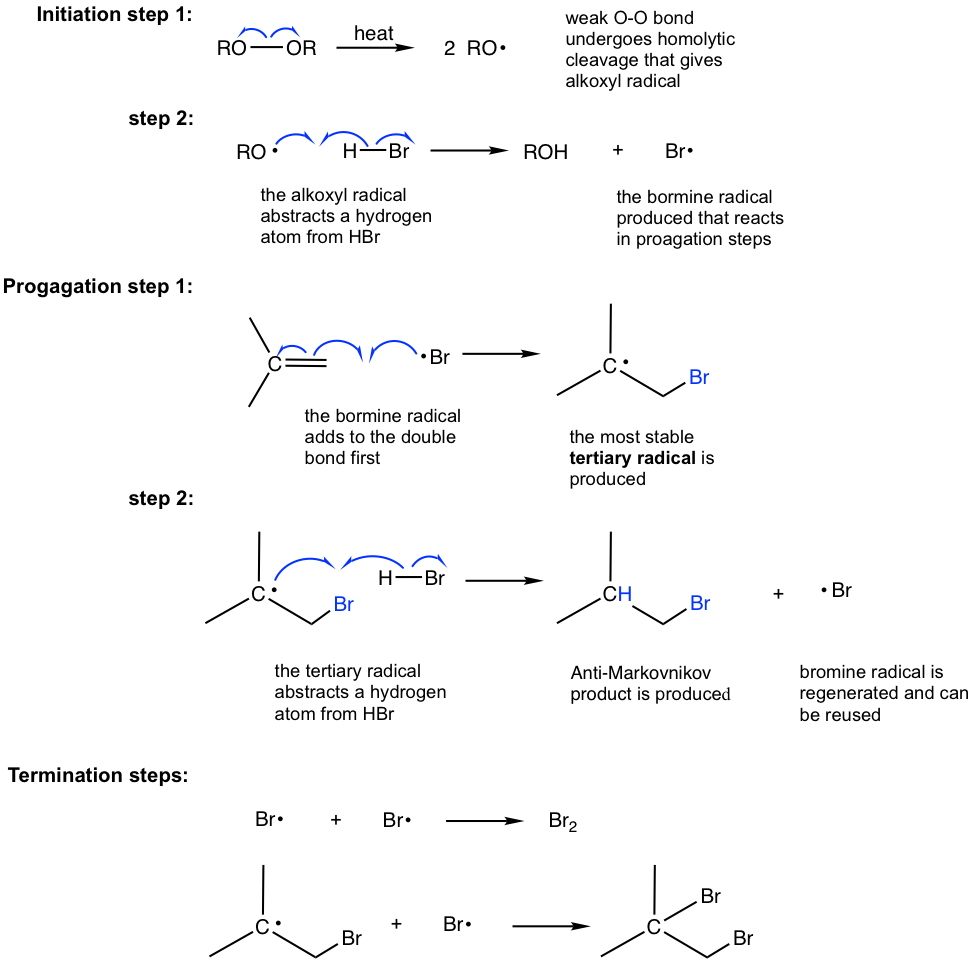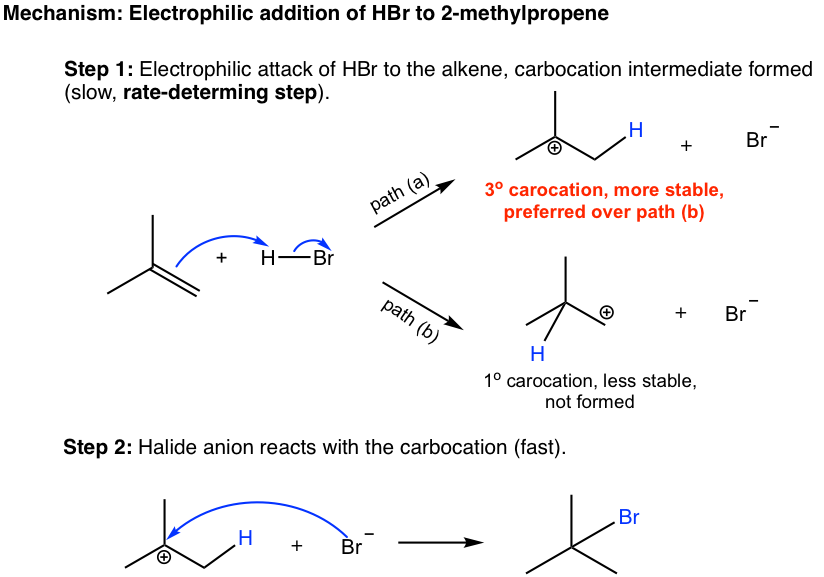Addition of Hydrogen Halides to Alkenes Mechanism
In addition the oxygen atom also has two non bonding electron pairs. Similarly groups that favor ionization of the halogen may generate a transition state with substantial positive charge on the alpha-carbon and only a small degree of CH breaking.

10 2 Reactions Of Alkenes Addition Of Hydrogen Halide To Alkenes Organic Chemistry I
Only one textbook in this admittedly incomplete sample mentions the S N i mechanism at all.

. The first step involves addition of H to the CC double. A recent application is the generation of highly reactive aryl radicals which are useful arylating reagents in synthesis by photoinduced electron transfer PET from photoredox catalysts to suitable precursors followed by bond scission 8 9However the choice of aryl radical precursors is currently limited to electron-poor arenes such as diazonium 6 10 or. In case of unsymmetrical alkenes the addition reaction takes place in accordance with Markovnikovs rule Unit 13 Class XI.
With such capabilities they can. 1-butene 2-butene and isobutylene. H2O acts as a nucleophile in this reaction.
This is mainly due to the self-bonding or catenation of carbon that prevents the complete saturation of the hydrocarbon by the formation of double or triple bonds. The following Diels-Alder cycloaddition was recently performed by Mukherjee et al. Matching alcohols to their names I.
Drawing alkene formulas from names. Theres no warning sign saying wait. Select all that apply.
Formation of alkenes. Formation of protonated alcohol. Drawing alkyne formulas from names.
Which of the following options correctly describe the mechanism of acid-catalyzed hydration of an alkene. The primary alcohols elimination reactions follow the E2 mechanism whereas the secondary and tertiary alcohols. Notably for products 210 and 214 12 to 14 racemization is observed which can be explained by the comparably high acidity of the α-hydrogen atom in the case of the starting 2.
The antiMarkovnikovs addition results from a hydroborationoxidation reaction. If its not in the textbook chances are it. CHCl COEt ACN CoEt AcOEt CN -78C 8h 25 75 When cyclopentadiene is added in excess the reaction is pseudo-1 order with respect to the fumaric nitrile ester.
The ability of hydrocarbons to bond to themselves is known as catenation. As shown in the following figure a hydrogen ion catalyzes the Markovnikovs addition. Mechanism The mechanism of the reaction involves the following three steps.
Products 214 to 215. Represented by R-Mg-X where R is an alkyl or aryl group while X is a halogen the Grignard reagent easily forms a carbon-carbon. The S N 2 doesnt happen for secondary alcohols.
A catalyst containing atomically dispersed Pd sites on N-heterocyclic carbene NHC-stabilized Au nanoclusters with the precise formula of PdAu 9 NHC Bn 7 X 2 NHC Bn is dibenzylbenzimidazolin-2-ylidene X is Br or Cl has been developed for the regioselective hydrogenation of alkenes. Each Pd site is encircled by an Au 9 ring protected by seven NHC. Drawing formulas from names.
Thus the carbonyl carbon and the three atoms attached to it lie in the same plane and the π-electron cloud is above and below this plane. For instance alkanes alkynes or alkenes the amount of bonded hydrogen decreases in alkenes and alkynes. E-Stilbene commonly known as trans-stilbene is an organic compound represented by the condensed structural formula C 6 H 5 CHCHC 6 H 5Classified as a diarylethene it features a central ethylene moiety with one phenyl group substituent on each end of the carboncarbon double bondIt has an stereochemistry meaning that the phenyl groups are located on.
The reaction intermediate is an epoxide. Alkenes having four or more carbon atoms can form diverse structural isomersMost alkenes are also isomers of cycloalkanesAcyclic alkene structural isomers with only one double bond follow. From alkenes i By acid catalysed hydration.
Mechanism of Dehydration of Alcohols. C 4 H 8. In addition to primary amines secondary amines led to reductive coupling with nitriles and provided tertiary chiral amines in up to 85 yields and 99 ee Fig.
Dehydration can be performed in a 3-step mechanism. Drawing formulas from names. You will find it - Its all here.
Drawing alcohol formulas. Organic Chemistry Study Materials Practice Problems Summary Sheet Guides Multiple-Choice Quizzes. Dehydration of alcohols follows the E1 or E2 mechanism.
The second step involves addition of an OH- to a carbocation. Reaction Mechanism Click Here for Sample Questions The haloalkanes or aryl halides with sp 3 or sp 2 hybridised carbon atoms when reacted with Magnesium metal give Grignard reagent which is an organometallic compound. For example if the Rgroups on the beta-carbon enhance the acidity of that hydrogen then substantial breaking of CH may occur before the other bonds begin to be affected.
Drawing formulas from names. C 3 H 6. The bond angles are approximately 120 as expected of a trigonal coplanar structure Figure 121.
The elements of water can be added to the doublebonded carbons of an alkene in either a Markovnikovs or an antiMarkovnikovs manner. Alkenes react with water in the presence of acid as catalyst to form alcohols. 1212 Structure of the Carbonyl.
C 5 H 10. C 2 H 4. In four textbooks where SOCl 2 is mentioned the reaction is shown as proceeding through an S N 2 mechanism.

10 2 Reactions Of Alkenes Addition Of Hydrogen Halide To Alkenes Organic Chemistry I

Electrophilic Addition Of Hydrogen Halides Chemistry Libretexts

9 2 Addition Of Hydrogen Halides To Symmetrical Alkenes Chemistry Libretexts

Electrophilic Addition Of Hydrogen Halides To Alkenes Youtube
Comments
Post a Comment